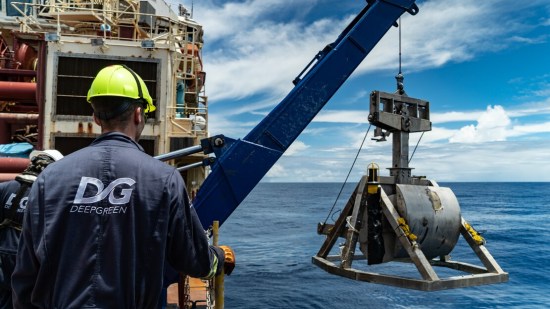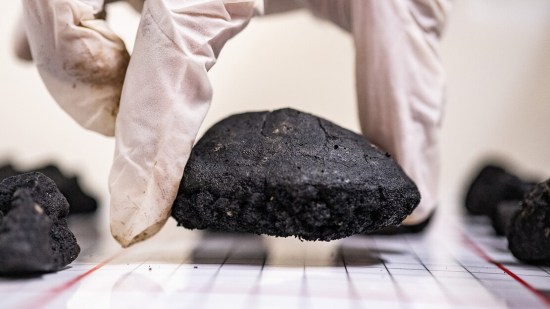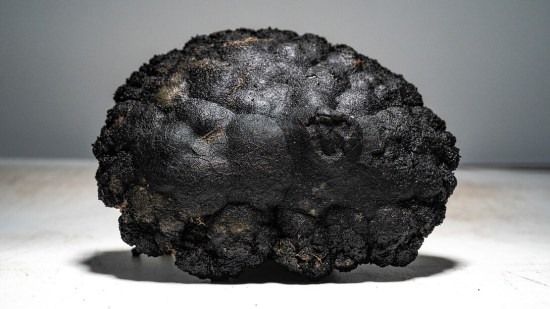Could Future EV Battery materials Come From the Seabed?
Published on May 24, 2021
Written by motortrend.com

A billion batteries’ worth of rare metals lie on the ocean floors.
In my April “Green Issue” column, I fearlessly predicted that the long-term carbon-neutral future of personal transportation would be electric vehicles powered by renewable energy. Projections by Deloitte and Bloomberg New Energy Finance Group peg global EV penetration at around 20 percent by 2030, rising to 57 percent by 2040. If accurate, we could have a billion electric vehicles on the road by 2050. Great news for the environment, right?
Not when it comes to sourcing metals for a billion battery packs.
Using current state-of-the-art NMC811 battery chemistry (nickel-manganese-cobalt in an 8:1:1 ratio), each EV with a 75-kW-hr battery pack requires
- 124 pounds of nickel
- 18 pounds of lithium
- 187 pounds of copper for connectors and harnesses.
- about 15 pounds each of manganese and cobalt
Boosting mining operations to cover a billion such EV batteries in the face of steadily declining ore grades will force establishment of new strip or tunnel mines and/or wider or deeper mining of additional rock, which will require more energy and chemicals, contaminate more water, generate more toxic waste, cause environmental damage, and/or displace additional wildlife and human populations.
Many of these minerals also happen to be located in not-so-nice parts of the world—meaning making ethically challenging deals with political strongmen who care more for looting the till than for human rights.
What about mining the seabed? Massive, mineral-rich sulfide deposits form around hydrothermal vents lining volcanic ridges on the seafloor. But extracting them threatens the vibrant ecosystem these vents support, and mechanical mining of these sulfides or the cobalt crusts in the deep ocean is extremely expensive.
There is a cheaper, easier-to-obtain seabed metal source, though.
Vast areas of the abyssal (13,000 to 20,000 feet deep) seafloor, like the 1.8 million square-mile Clarion-Clipperton Zone between Hawaii and Baja California, are covered in potato-sized polymetallic nodules.
These form over millennia as water-soluble manganese from sediment pore water on the seafloor causes insoluble manganese hydroxide to precipitate on pieces of fish bones or teeth. These hydroxide materials then scavenge soluble copper, cobalt, and nickel from these same mineral-rich waters.
Each nodule is a BEV starter kit composed of 29.2 percent manganese, 1.3 percent nickel, 1.1 percent copper, and 0.2 percent cobalt. The rest is ammonium sulphate (fertilizer). It’s easier and cleaner to isolate the metals from nodules than from land-based ores.
At three sites studied in the CCZ, nodules covered more than 30 percent of the seabed surface—perhaps 23 billion tons. The entire CCZ alone is therefore presumed to contain nearly 10 times the manganese, 6 times the cobalt, 3.5 times the nickel, and a third as much copper as is known to exist on land. It’s just waiting to be gathered, hoisted to the surface, and refined.
Of course, there is an environmental counterpoint. In an August 2019 article in Nature, deep-sea biologist Craig Smith of the University of Hawaii, Honolulu, described collecting more than 1,000 animal species during 30 years of study in the CCZ. Some 90 percent of these sea cucumbers, sea urchins, soft corals, starfish, sea anemones, and worms were new to science or undescribed. Smith reckons another 100,000 microorganism species reside alongside them.
At a time when the crucial, fragile ecosystem of coral reefs are dying by square miles every day, all of those deep-sea species may be similarly threatened by even the simple task of plucking nodules from the seafloor. Who will pick the ecological winners and losers here?
The International Seabed Authority was established by the United Nations in 1994 to regulate activity affecting international seabeds in accordance with the UN Sustainable Development Goals.
The ISA develops regulations and grants exploration and mining rights, with steering from its 168 member states. But because the U.S never ratified the United Nations Law of the Sea “UNCLOS” Convention (despite largely adhering to its tenets), we don’t have a seat at the table or a stake to this metallurgic bounty claimed. Know who are members? No. 2 manganese-/No. 3 copper-mining China and No. 2 cobalt-/No. 3 nickel-mining Russia.
Canada’s DeepGreen Metals Inc. plans to begin mining its three CCZ claims in 2024 with a goal of filling the forecast demand/supply gap by 2030. Hopefully it can do it in such a way as to give the bounty of deep-sea life a fighting chance at survival.
Shouldn’t we guarantee our domestic auto industry a reliable source of these vital resources? How ’bout it, Congress? Can we please ratify UNCLOS and get a seat at the CCZ table?
See more here: motortrend.com
PSI editor’s note: The work of Peter Ridd et al shows coral reefs are not ‘dying by square miles every day’. This is a lie.
https://principia-scientific.com/could-future-ev-battery-materials-come-from-the-seabed/?utm_source=feedburner&utm_medium=email&utm_campaign=Feed%3A+psintl+%28Principia+Scientific+Intl+-+Latest+News%29
Thanks to: https://principia-scientific.com
Related posts:
Views: 0
 RSS Feed
RSS Feed

















 May 25th, 2021
May 25th, 2021  Awake Goy
Awake Goy  Posted in
Posted in  Tags:
Tags: 
















